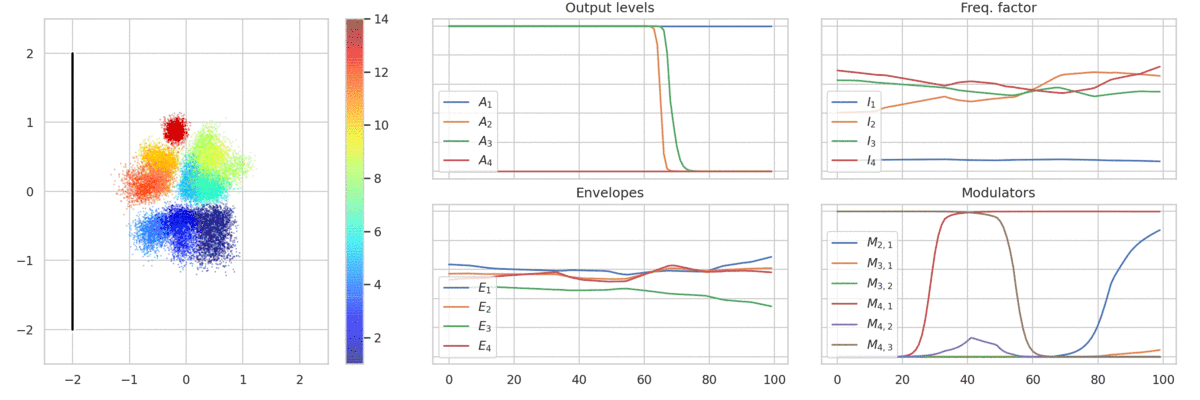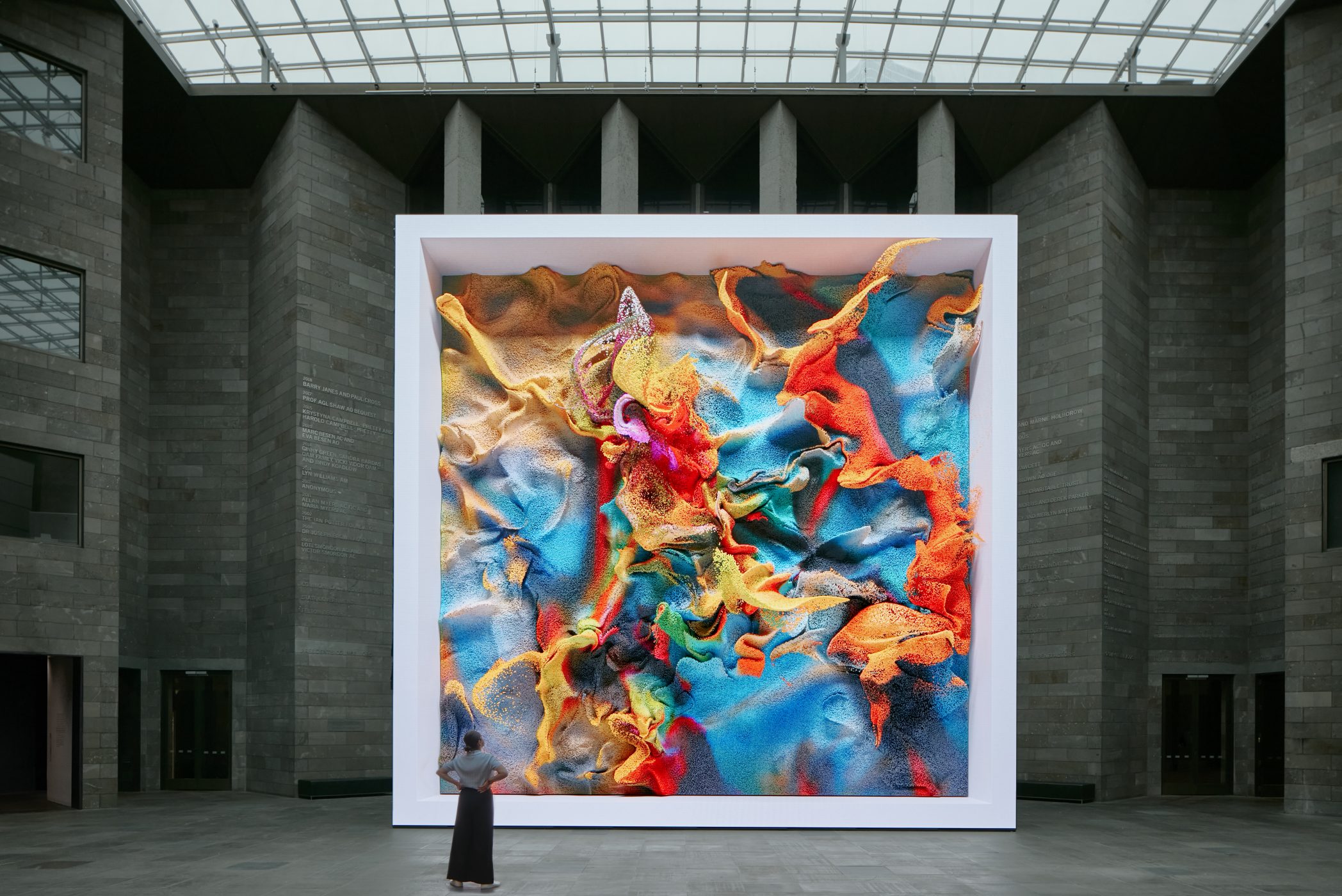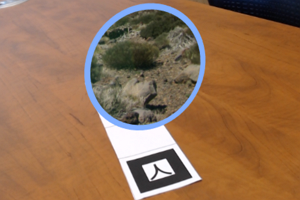Sound and Music Computing Project Catalog
Supervision, Aalborg University, 2024
This is a container for semester project ideas for the SMC students.
The SMC7/8 students should consider classical Audio Signal Processing projects, whereas SMC9/10 students who take the Machine Learning Course (MLME) could also consider Machine Learning projects.
The following MATLAB-based external resources are good places to think about the scope, content, context, and value of semester projects.
Classical Electronic Music for Modern AI

🚀 Juan Alonso Moreno has developed a differentiable FM synthesizer using the DDSP framework in his 2021 SMC Master thesis
Franco Caspe, a PhD student from QMUL has interesting related projects. There is a new book and repo by Yee-King you can use to combine the power of deep learning and the real-time capabilities of the JUCE platform.
💿 DATA: Miller S Puckette in his Pd Repertory Project provides example study patches of important electronic / computer music projects. Stefano Fasciani (U. Oslo) is actively working on a dataset generator for musical devices.
Starting from these models 🚀 and data 💿, can you design and evaluate an end-to-end differentiable synthesizer?
References
Caspe, Franco, Andrew McPherson, and Mark Sandler. 2022. “DDX7: Differentiable FM Synthesis of Musical Instrument Sounds.” arXiv. https://doi.org/10.48550/arxiv.2208.06169.
Lazzarini, Victor, Damián Keller, and Nemanja Radivojević. 2023. “Issues of Ubiquitous Music Archaeology: Shared Knowledge, Simulation, Terseness, and Ambiguity in Early Computer Music.” Frontiers in Signal Processing 3: 1132672. https://doi.org/10.3389/frsip.2023.1132672.
Lazzarini, Victor, and Joseph Timoney. 2024. “Theory and Practice of Higher-Order Frequency Modulation Synthesis.” Journal of New Music Research ahead-of-print (ahead-of-print): 1–16. https://doi.org/10.1080/09298215.2024.2312236.
Yee-King, M. J. (2024). Build ai-enhanced audio plugins with C++. London, UK: Routledge. DOI: 10.4324/9781003365495. Repo: https://github.com/yeeking/ai-enhanced-audio-book
Zattra, Laura. 2007. “The Assembling of Stria by John Chowning: A Philological Investigation.” Computer Music Journal 31 (3): 38–64. https://doi.org/10.1162/comj.2007.31.3.38.
Quantum Sound and Music Computing
Denmark has a rich history of innovation in Quantum research, and aims to a big player in Quantum Computing. There is a growing community, a national strategy, talent programs, and resources available for the next generation of Quantum Computing and Quantum Machine Learning professionals. Outside of Denmark, startups like Moth Quantum strive to enable the next era of music, gaming and the arts with quantum computing technology.

Image linked from https://refikanadol.com/works/quantummemories/
Objective: Explore the intersection of quantum and creative computing in sound and music, focusing on the development of new musical instruments and compositions, using the knowledge, skills, and competencies you will gain in three semester courses.
Key References:
Miranda, E. R. (2022). Quantum Computer Music, Foundations, Methods and Advanced Concepts. Springer
Miranda, E. R. 2024. “The Advent of Quantum Computer Music: Mapping the Field.” Reports on Progress in Physics 87 (8): 086001. https://doi.org/10.1088/1361-6633/ad627a.
MATLAB Quantum Computing Documentation
Marker-based / Markerless Augmented Reality on Mobile Devices
Can you help the cultural / creative sectors (CSSs) to reach new audiences using digital technologies. especially Augmented Reality? In collaboration with national / international CCS you will design digital applications for various devices, which will form connections between locations, personal experiences and artistic projects.

An augmented reality “portal to another world” effect. Portal renders above a Kanji marker. Video preview here. After https://stemkoski.github.io/AR-Examples/. See also Dourado, Lima, 2021, “Time's Running Out! Exploring User Interaction of Location-Based, Time-Limited, Augmented Reality Experiences In Urban Environments”, MSc Thesis, Aalborg University Copenhagen
Variations / Ideas
- 3D Sound Spatialization using 3DTune-In tools
- Gamification: timer, game characters, leader boards
- Evaluation: Interviews, physilogical logs, correlation analysis
- Markerless Augmented Reality using ARCore or ARKit
- Machine Learning (for SMC9 and above)
Example Hypotheses (P1)
- Fear of Missing Out (FoMO) and scarcity are positively related to continuance intention using Augmented Reality
- FoMO and scarcity decrease enjoyment
- General FoMO is positively related to scarcity
- Audio/Visual Presence increases enjoyment
- Audio/Visual 3D adoption increases enjoyment
Augmented Reality Audio
Since 2016, we have been using Resonance Audio in mobile Augemented Reality projects in real-time. Here is a short demo showing how we used in Google’s Tango in real-time https://youtu.be/UP6wdnJQJz8 (also room and object scanning). The video ends up with an idea of extending the approach to outdoor scenes, esp. forests. Here are some pointers:
Stevens, Francis, Damian T Murphy, Lauri Savioja, and Vesa Välimäki. 2017. “Modeling Sparsely Reflecting Outdoor Acoustic Scenes Using the Waveguide Web.” IEEE/ACM Transactions on Audio, Speech and Language Processing 25 (8): 1566–78. doi:10.1109/taslp.2017.2699424.
Kaneko, Shoken, and Hannes Gamper. 2021. “A Fast Forest Reverberator Using Single Scattering Cylinders.” 2021 IEEE 23rd International Workshop on Multimedia Signal Processing (MMSP) 00: 1–5. doi:10.1109/mmsp53017.2021.9733582
The perceivable changes in the forests acoustic environments are important for AR applications like https://eiwaztreeoflife.com/. Can you enchance the climate impact experience with an interactive and adaptive AR app and help saving the planet, in collaboration with Martine Jarlgaard?
Variations / Ideas
- Extending Resonance Audio with three / forest reverbs
- Gamification:
- Evaluation: Interviews, physilogical logs, correlation analysis
- Machine Learning (for SMC9 and above)
Example Hypotheses (P1)
- Tree/Forest reverb simulation makes a positive impact on immersion for https://eiwaztreeoflife.com
- Audio/Visual Presence through forest / tree reverb increases enjoyment
- Audio/Visual 3D adoption through occlusion increases enjoyment
